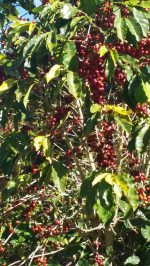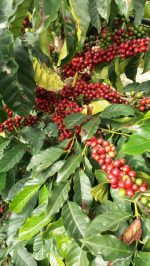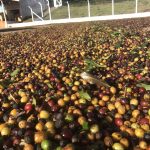91.84
History of the farm
The story of Sítio São Sebastião begins in the mid 1990s. It was a pristine area on which around a hectare of coffee was planted by the producer’s father. Twenty years later, the area came to be run by his son, Mérce Jordan, the current owner. Mérce completely renewed the farm, seeking quality. He renewed the fields themselves and farm management with pruning and irrigation and planted trees around the property. All of the work on the farm is done with the help of his family under a system of familial agriculture. Mérce and his wife rely on help from his parents, sister and brother-in-law. Coffee is the main source of income for the family. Production varies from around 15 bags per year during off years and 25 to 30 in good years. Mérce also works as a civil servant.
Coffee processing system
The processing system was completely changed with the goal of producing quality. The harvest became selective. Processing became pulped natural. Coffee goes directly from harvest to the pulper, which removed the hull. From there, it goes to cement patios where drying begins. Drying is finished when the beans reach around 11.5% humidity, the proper humidity for warehousing in rest boxes to protect the coffee from moistening. Then the beans rest to improve uniformity. Finally, they are milled for commercialization.
Concern about quality
One of the most crucial points for one who wants to produce specialty coffees is to be careful and to love what you do. Merce says “I believe that specialty coffee is only produced if it’s done with love.” One of the main concerns is with fermentation of the beans. To prevent this, it is necessary to rake the coffees several times a day, a task that demands much from the producer. One must also take care with green cherries and the temperature in the greenhouse, these can radically compromise the quality of the drink.
| Rank | 3a |
|---|---|
| Farm Name | Sítio São Sebastião |
| Farmer/Rep. | Merce Jordan Araújo Silva |
| Altitude | 1323 m.a.s.l. |
| Country | Brazil |
| Year | 2019 |
| Size (30kg boxes) | 6 |
| City | Piatã, BA |
| Region | Chapada Diamantina |
| Program | Brazil 2019 |
| Overall | black tea, caramel, chocolate, floral, honey, sweet milk, sugar cane, jasmine, orange marmalade, honey, spices, jammy, dulce de leche, intense, peach, rhubarb jam, apricot |
| Aroma/Flavor | pleasant, crisp, citric, juicy, complex, sweet lemon |
| Acidity | very balanced, transparent |
| Processing system | Pulped Natural |
| Variety | Red Catuaí |
| Coffee Growing Area | 2 ha |
| Farm Size | 1 ha |
| Auction Lot Size (lbs.) | 396.84 |
| Auction Lot Size (kg) | 180 |
| Business Phone Number | +55 77 99131-5367 |
| Business Address | [email protected] |













